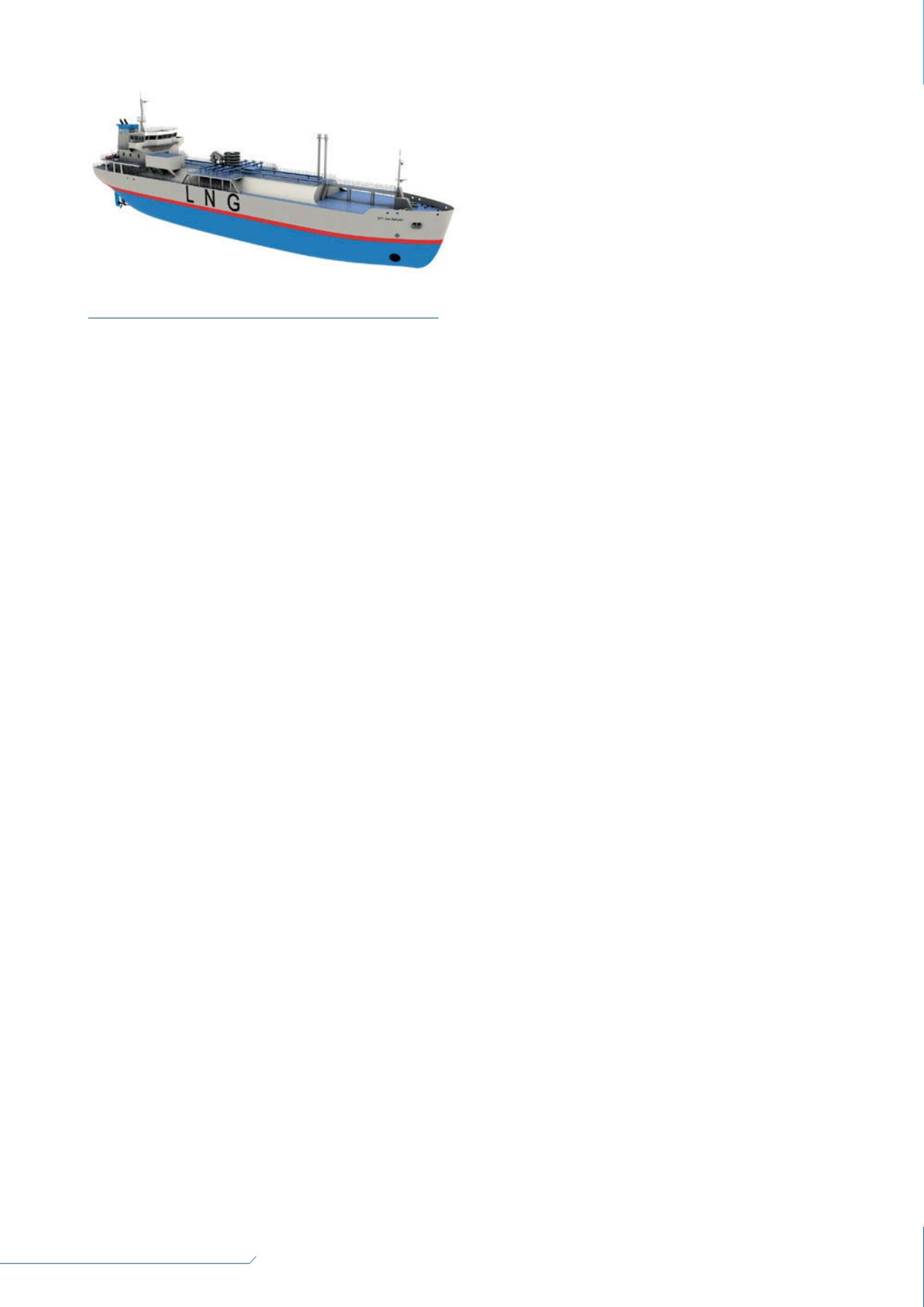
64
LNG
INDUSTRY
APRIL
2016
Transfer means:
Flexible hose for LNG with no vapour return.
Diameter: 3 in.
Length of flexible hose: 13 mmaximum.
Flowrate: 60 m
3
/hr maximum.
Inner hose pressure: 15 bar maximum.
Safety devices:
Dry coupling with passive emergency breakaway.
Manually operated and automatic valves on truck and
ship’s manifolds.
Pneumatic ship-to-shore link to activate emergency
shutdown (ESD) of LNG transfer.
Operational data:
Duration of LNG bunkering: 2 hr.
Annual frequency: 350 operations per year.
Assumed delay between LNG leakage and ESD
(pump turned off, valves closed): major leak = 30 sec.;
minor leak = 3 min.
Ship-to-ship bunkering
Transferring LNG from a bunker vessel (or bunker barge) allows
for a larger volume of LNG to be transferred to the client vessels
than that transferred using bunker trucks. In 2015, only a couple
of bunker vessels were being operated worldwide. However,
there are incoming units currently being built, which will soon
be operated in Europe by some of the major gas players
(Shell in Rotterdam, the Netherlands; ENGIE in Zeebrugge,
Belgium). Figure 3 shows an LNG bunker vessel developed by
Marine Assistance and Gaztransport & Technigaz (GTT).
The following describes the equipment used in the STS
transfer of LNG to an ultra large container carrier vessel, as well
as operational data:
Client vessel:
Tank type: 2 x 10 000 m
3
.
Inner pressure: 5 bar maximum.
Bunker vessel
Tank type: 3 x 3333 m
3
.
Inner pressure: 5 bar maximum.
Bunkering means:
LNG transfer via three flexible hoses with 8 in. dia.
LNG flowrate: 3 x 1000 m
3
/hr maximum.
Inner hose LNG pressure: 5 bar maximum.
C
M
Y
CM
MY
CY
CMY
K
Vapour return by 6 in. dia. flexible hose.
Vapour return flowrate: 1000 m
3
/hr.
Length of flexible hoses: 25 mmaximum.
Safety devices:
Dry coupling with passive emergency breakaway on hose
connection to client vessel.
Manually operated and automatic valves on client and
bunker vessel’s manifolds.
Optical or electric STS link to activate ESD of LNG transfer.
Operational data:
Duration of LNG bunkering: 7 hr.
Annual frequency: 100 operations per year.
Assumed delay between LNG leakage and ESD
(pump turned off, valves closed): major leak = 10 sec.;
minor leak = 2 min.
Methodology
The methodology chosen for this risk analysis is the same as
the one used for SEVESO site risk assessment. However, the
difference here is that both the LNG bunkering client vessel and
the bunker tanks are mobile.
For the purposes of this study, only the risks associated
with the bunkering process were assessed. The risks involved
by the sole presence of an LNG-fuelled vessel in a harbour
were not assessed.
The French risk assessment methodology consists of the
following steps:
A hazard and operability study (HAZOP) to identify
hazardous events and mitigation measures against them.
This analysis was performed with all the parties involved
in harbour bunkering operations (port authorities, ship
owners, bunker providers, firemen, etc.).
Modelling to determine the effect radius of the worst type
of hazardous event (flash fire).
An estimation of casualties on the ground by applying the
effect radius to each bunkering site.
A probability assessment (how often is an incident likely to
occur?).
Preparation of a criticality matrix (is the resulting level of
risk acceptable?).
Once the criticality matrix has been drawn up, the following
three decisions may be taken:
LNG bunkering permission is granted.
LNG bunkering permission is granted under special
mitigation measures – subject to discussion with local
authorities based on a cost–benefits study.
LNG bunkering is not allowed.
Results
As a result of the risk analysis, modifications of the local
regulations on the transportation and handling of dangerous
goods were proposed and will be incorporated within local
rules in 2016.
For most of the terminals or quays, permission for
bunkering operations will be granted subject to the
implementation of simple, but effective, risk mitigation
measures, such as the limitation of harbour traffic, truck
Figure 3.
5000 m
3
LNG/Marine Gas Oil (MGO) bunker vessel
(Marine Assistance/GTT).


